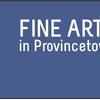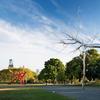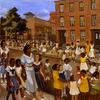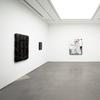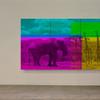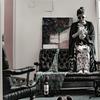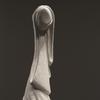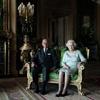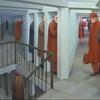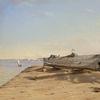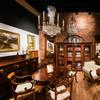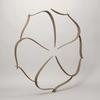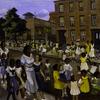'Fragile Earth: The Naturalist Impulse in Contemporary Art' Opens at Florence Griswold Museum
- OLD LYME, Connecticut
- /
- June 05, 2019
Fragile Earth: The Naturalist Impulse in Contemporary Art (now through Sept. 8) showcases the diverse approaches taken by ecologically concerned artists today, illustrating the powerful role they play in advocating for environmental causes. The Florence Griswold Museum in Old Lyme, Conn. commissioned four leading contemporary artists to create new work that incorporates and responds to the natural world. The exhibition builds on the success of the Museum’s 2017 exhibition, Flora/Fauna: The Naturalist Impulse in American Art, which surveyed the history of American artist-naturalists from the 19th to mid-20th centuries.
Artists Jennifer Angus, Mark Dion, Courtney Mattison, and James Prosek have created striking installations that reflect the vulnerability of the environment. “These artists were selected for the profound message their works convey about environmental conservation,” says exhibition curator, Jennifer Stettler Parsons, Ph.D. “They transform natural and non-traditional materials, like insects and found debris, into art in order to make visible the human role in global climate change, and to reveal how our daily choices may endanger our planet’s future.” Parsons curated both Flora/Fauna and Fragile Earth.
Mark Dion, Courtney Mattison, and James Prosek present commissioned work and select loans in the Museum’s Krieble Gallery, putting their art in conversation with the Museum’s landscape and historic structures. Conceptual artist Mark Dion is well-known for assemblages that critique humans’ treatment of the environment and the way we explore, classify, and preserve natural specimens for our own ends. He will create a new “cabinet of curiosity” with debris collected along the Connecticut shoreline. Sculptor and ocean advocate Courtney Mattison displays her monumental, intricately detailed ceramic wall reliefs that replicate the beauty of coral reefs and inform viewers of their threatened state. Often described as a contemporary Audubon, artist-naturalist James Prosek considers in his work how we engage with, identify, and categorize nature. Playing off the aesthetic of the field guide, he exhibits one of his signature hand-painted, silhouette-style murals of Connecticut flora and fauna, as well as a large-scale print made with the bodies of inked eels—travelers who make an awe-inspiring journey between local waters and faraway oceans. Artist and professor Jennifer Angus has staged an artistic intervention in Florence Griswold’s historic boardinghouse, activating the first floor with a theatrical display created with stunning preserved insects. Pinning insects to the walls in ornamental patterns, Angus creates surprising beauty, while also informing visitors of their importance to the ecosystem. In the months leading up to the exhibition, Angus was the Museum’s first Artist-in-Residence, installing her work on campus and interacting with the public. Read more about Angus’s work in the Florence Griswold House…
Fragile Earth coincides with early stages of a $1 million Landscape Master Plan, generously funded by the Robert F. Shumann Foundation, which will restore the historic site’s original meadows, hedgerows, and thickets, and create a half-mile interpretive The Artists’ Trailthrough the grounds. In an effort to interweave art, history, and nature, interpretative wall texts in Fragile Earth will connect the gallery installations with the outdoors, and encourage audiences to participate in conservation efforts. In addition to traditional scholarly talks on nature-based topics, the 12-acre campus will become its own laboratory for learning with “Learning En Plein Air,” a series of educational events outdoors.
An exhibition catalogue, released in August 2019, will feature essays and written dialogues by Parsons, the participating artists, as well as renowned environmental scientist, the Honorable Jane Lubchenco, Ph.D. With extensive photography of the installations, the publication will appeal to both general and academic audiences, while contributing to the fields of American art history and environmental conservation.

